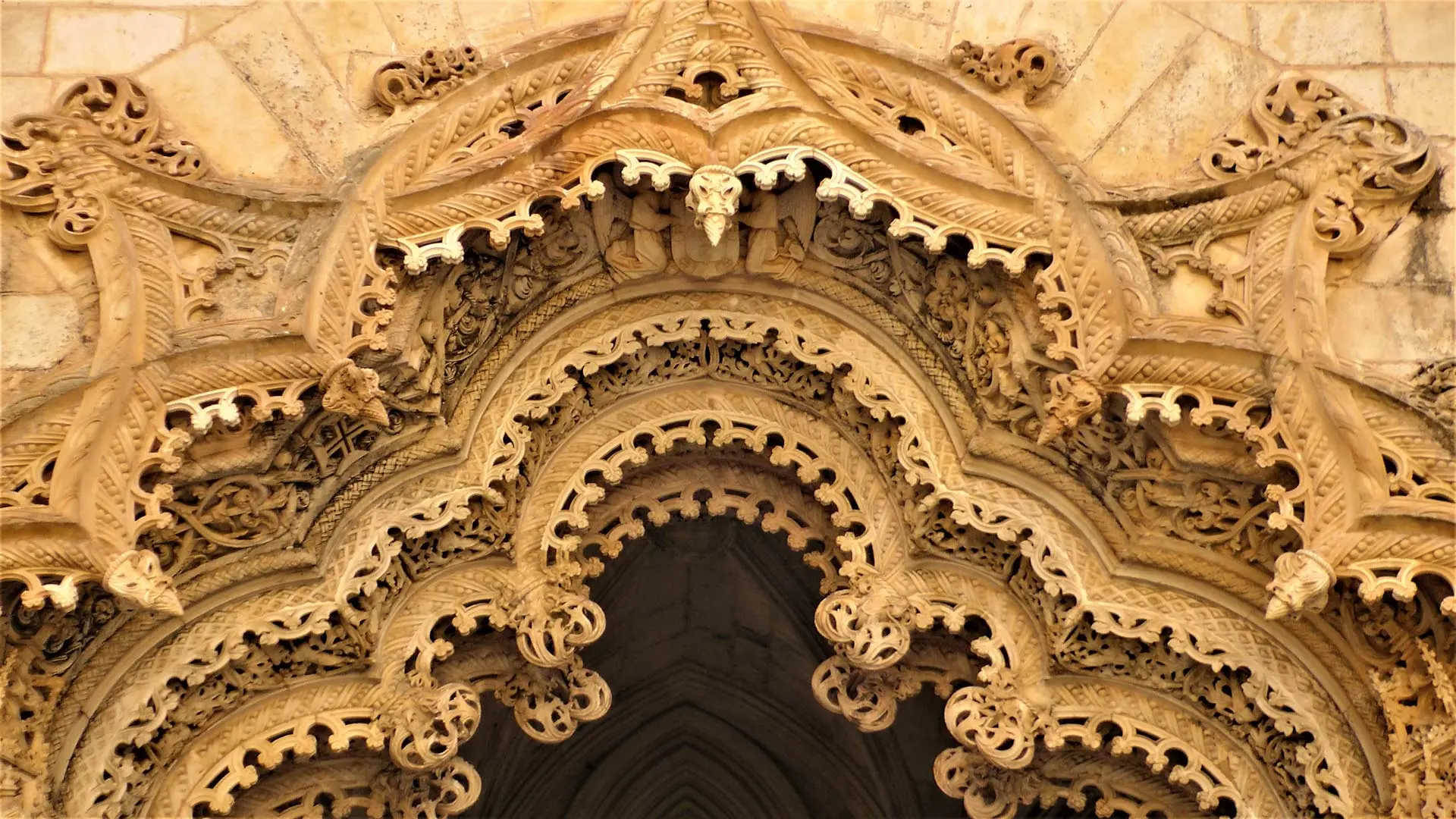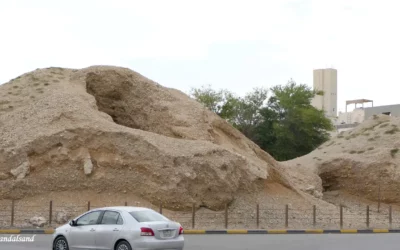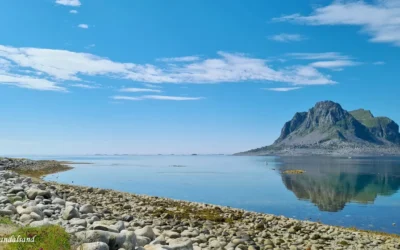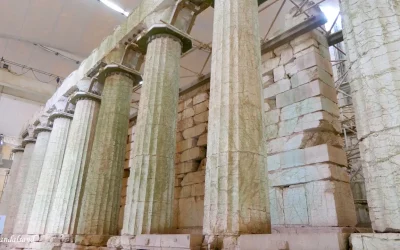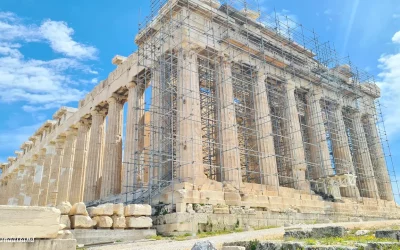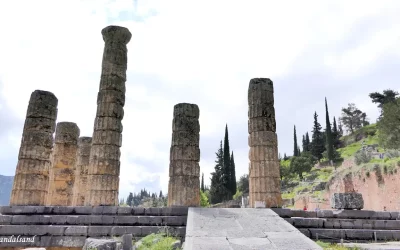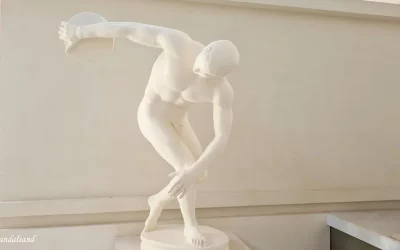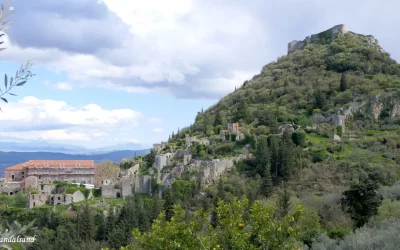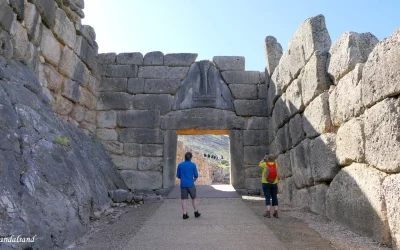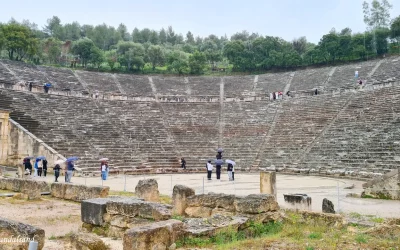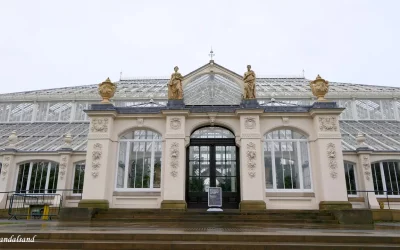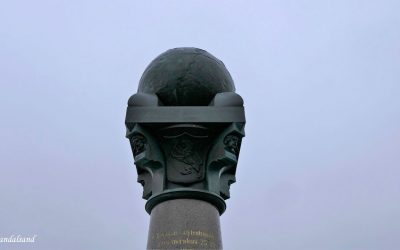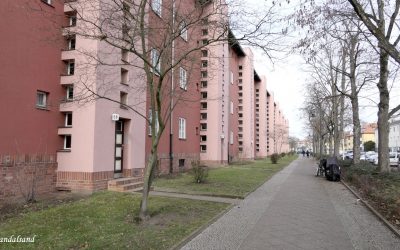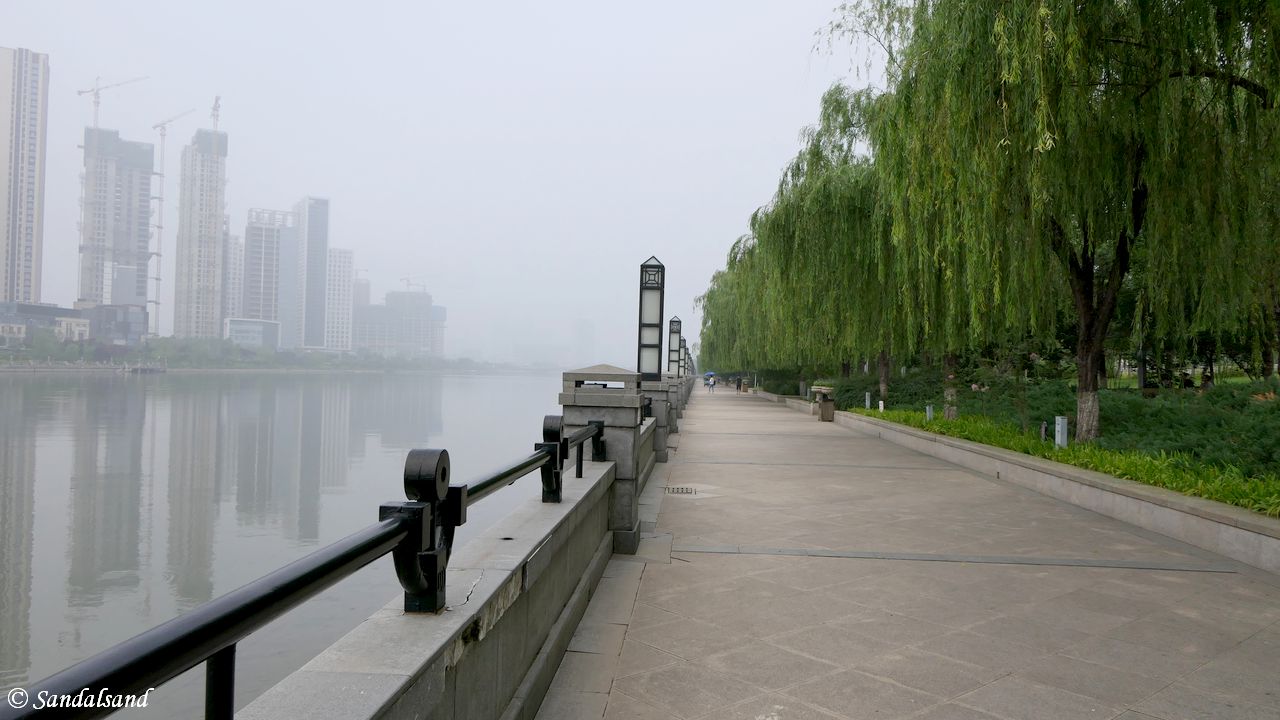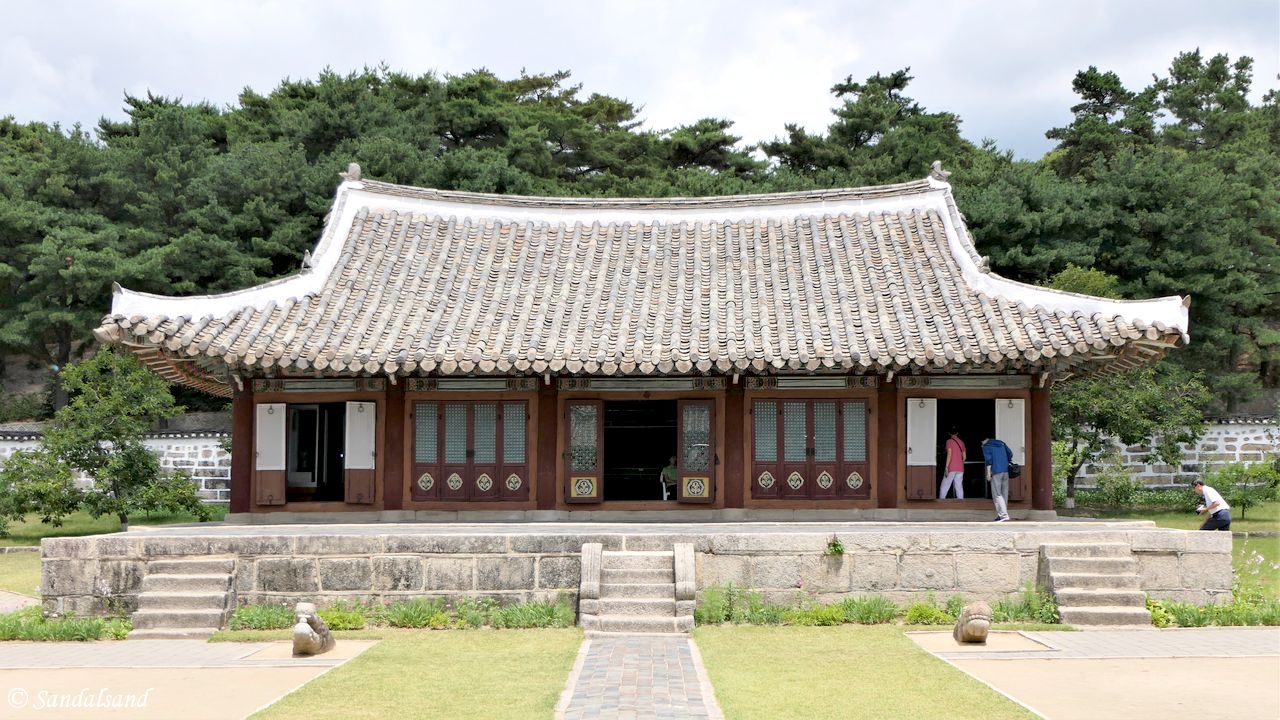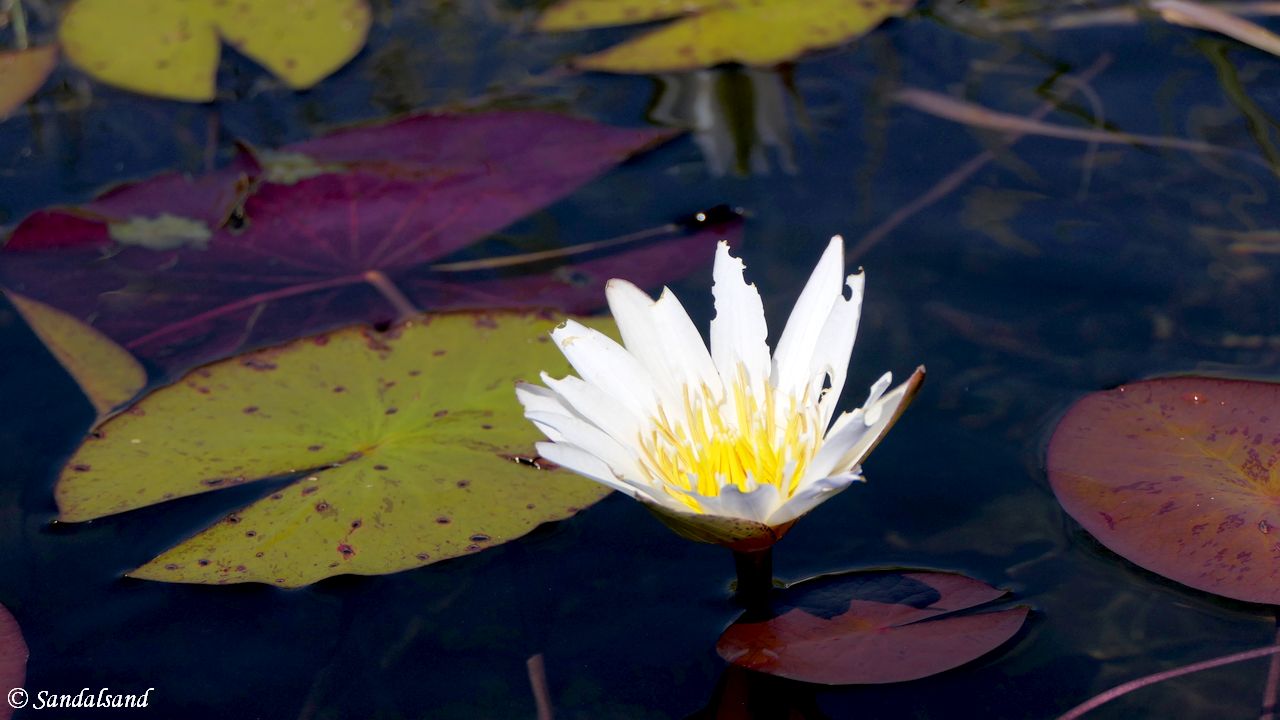World Heritage Sites
The UNESCO World Heritage List includes more than a thousand properties of outstanding universal value. They are all part of the world’s cultural and natural heritage.
UNESCO’s World Heritage Centre is responsible for the World Heritage List. The first inscription was in 1978. Since then UNESCO has developed the criteria and added an average of 20-30 sites each year.
It includes 1,248 sites in 170 “States Parties” (countries). A site is categorised as cultural heritage (972 sites), natural (235) or a mix of the two (41 sites).
On this page you will get to learn more about the heritage sites and where they are. Moreover, Sandalsand’s large collection comes on display. The reader will get a four-way path into this collection. First, on a map. Second, in a table. Third, in a video.
Fourth and last, but not least, there are links to articles on Sandalsand which describe each visited site.
The featured illustration with intricate carvings, is a detail from the Monastery of Batalha, Portugal.
About
Thoughts
Regions
Videos
Map
Table
Posts
About the World Heritage Sites
Properties on the World Heritage List must (a) be of outstanding universal value and (b) meet at least one of the ten selection criteria. UNESCO writes that until the end of 2004, World Heritage sites were selected on the basis of six cultural and four natural criteria.
With the adoption of the revised Operational Guidelines for the Implementation of the World Heritage Convention, only one set of ten criteria exists. All ten criteria are listed below, however Sandalsand has added two headlines (culture and nature) because the set of criteria still relates to two sets.
Culture
(i) to represent a masterpiece of human creative genius;
(ii) to exhibit an important interchange of human values, over a span of time or within a cultural area of the world, on developments in architecture or technology, monumental arts, town-planning or landscape design;
(iii) to bear a unique or at least exceptional testimony to a cultural tradition or to a civilization which is living or which has disappeared;
(iv) to be an outstanding example of a type of building, architectural or technological ensemble or landscape which illustrates (a) significant stage(s) in human history;
(v) to be an outstanding example of a traditional human settlement, land-use, or sea-use which is representative of a culture (or cultures), or human interaction with the environment especially when it has become vulnerable under the impact of irreversible change;
(vi) to be directly or tangibly associated with events or living traditions, with ideas, or with beliefs, with artistic and literary works of outstanding universal significance. (The Committee considers that this criterion should preferably be used in conjunction with other criteria);
The figures below illustrate how many times each Cultural criterion has been assigned. (Most properties score on two or more criteria; hence the large overall numbers.)
(i)
(ii)
(iii)
(iv)
(v)
(vi)
Nature
(vii) to contain superlative natural phenomena or areas of exceptional natural beauty and aesthetic importance;
(viii) to be outstanding examples representing major stages of earth’s history, including the record of life, significant on-going geological processes in the development of landforms, or significant geomorphic or physiographic features;
(ix) to be outstanding examples representing significant on-going ecological and biological processes in the evolution and development of terrestrial, fresh water, coastal and marine ecosystems and communities of plants and animals;
(x) to contain the most important and significant natural habitats for in-situ conservation of biological diversity, including those containing threatened species of outstanding universal value from the point of view of science or conservation.
The figures below illustrate how many times each Nature criterion has been assigned.
(vii)
(viii)
(ix)
(x)
Some thoughts
An inscription on the World Heritage List is generally regarded as an honorary tribute. It will also boost both commercial and preservation activities in or at the site.
Step one is to raise an awareness worldwide to the importance of preserving these sites for future generations. The next step is to do something about it, in other words to set up a conservation plan for the site. The final step is to live by it. These are very demanding tasks for all parties, and there are undoubtedly both economic and culture factors at play here.

UNESCO’s sign is found on many World Heritage Sites. The one pictured here is from Bryggen, in Bergen, Norway.
Some sites have been removed from the list. There have also been controversies between the WHC and a country relating to the future development of the site (like a particular bridge in Germany). Other removals have been obvious because the criteria are no longer met (such as the extinction of a particular bird in Oman).
With these cases in mind, one should note that the WHC operates a list of 56 properties in danger (2024).
Relative distribution of sites
When we look at the full site map, we immediately notice the prevalence of sites in Europe and North America (in reality Europe mostly). Nonetheless, almost the entire world is covered. That is actually no little achievement for the world community.
The following illustrations follow the WHC categorisation of world regions and show the relative distribution of sites.
%
Arab States
%
Africa
%
Latin America and the Caribbean
%
Asia and the Pacific
%
Europe and North America
Sites on a map
Drag and zoom on the map below to find sites visited by Sandalsand in more detail. Click on a marker to reveal the name and open the article about it. You will find the same links further down this page. Find all WHC sites on another Sandalsand map.
I have had my doubts what to do with Liverpool. It was once a World Heritage Site, but was delisted by UNESCO following a controversy with the city authorities. It is my hope it will be re-enlisted some time in the near future, so I have kept the article. However, I removed it from this map as well as from the table below.
Sites in a table
Here are the same sites in a table but with less information compared to the map markers above. Show more rows at a time, sort the table as you like, or search for a specific term. Click on a link to open that particular post.
Sites in 70 countries
It could be that “heritage tourism” is spreading along with the eco-tourism trend. Sandalsand has only in later years become conscious of it.
It was never my idea to become a collector of heritage sites, but I have nonetheless been to a large number. In recent years I have become more intent to visit a “world heritage” when I travel. I suppose that may be one of the purposes of such an official list in the first place.
In any case, I am not satisfied that I visited the pleasant town of Weimar in Germany without exploring the examples of Bauhaus architecture. Likewise, I went to the town of Pécs in Hungary without a look at the Early Christian Necropolis. (To my possible excuse: Neither of them was on the List at the time of my visit.)
Sandalsand’s list is a representative summary of UNESCO’s. It covers the world, and the majority are in Europe. Also, it features sites in both (all) categories: 199 cultural, 14 natural, and 6 combined sites.
Read about each site in separate articles. They include:
- The official and my personal descriptions of the site
- A link to the official UNESCO web page
- My photographs or video
- A link to the article(s) describing the context of my visit(s)
The articles offer short introductions to fabulous destinations around the world. Enjoy!
Here they are, the World Heritage Sites visited by Sandalsand. In my view, they are all lovely destinations.
World Heritage #1542 – Dilmun Burial Mounds
The Dilmun Burial Mounds in Bahrain exceed 10,000 in number and testify to an ancient civilisation that flourished more than 4,000 years ago. The...
World Heritage #1143 – Vegaøyan
Vegaøyan - The Vega Archipelago consists of 6,500 islands, islets and reefs on the Helgeland coast of Norway. The archipelago and human...
World Heritage #0392 – Temple of Apollo Epicurius
The temple of Apollo Epicurius at Bassae is one of the best-preserved monuments of the ancient Greek civilisation, from the 5th century BC. The...
World Heritage #0404 – Acropolis of Athens
The Acropolis of Athens has been on my bucket list for as long as I can remember. Getting there was a huge relief. I had finally reached the cradle...
World Heritage #0455 – Meteora
Meteora is a dramatic landscape in Greece with tall sandstone peaks. On the tops we may visit a number of centuries old monasteries. The UNESCO...
World Heritage #0393 – Delphi
Delphi is now an archaeological site. It once hosted the most famous oracle of ancient Greece and was regarded as the centre of the world. The...
World Heritage #0537 – Hosios Loukas
The Monastery of Hosios Loukas is one of three monasteries representing the "second golden age of Byzantine art" on the World heritage list. The...
World Heritage #0517 – Olympia
At the Archaeological Site of Olympia the Olympic Games were held without a break from 776 BC to AD 393, a period of 1169 years. They took place...
World Heritage #0511 – Mystras
The Archaeological Site of Mystras dates back to the Crusades. It evolved during the Byzantine era and has kept its legacy very well. The UNESCO...
World Heritage #0941 – Mycenae
The Archaeological Sites of Mycenae and Tiryns are representatives of a civilisation that dominated the eastern Mediterranean 3500 years ago. The...
World Heritage #0491 – Sanctuary of Asklepios
The Sanctuary of Asklepios in Greece was important in the transition between the healing god cults and modern medicine. The UNESCO World Heritage...
World Heritage #1084 – Kew Gardens
Kew Gardens, or more precisely Royal Botanic Gardens, Kew won its place on the World Heritage List in 2003. The UNESCO World Heritage List includes...
World Heritage #0352 – Rock Art of Alta
Go visit the Rock Art of Alta. More than 6,000 rock carvings and paintings have been discovered in the north of Norway. They date back 2,000-7,000...
World Heritage #1187 – Struve Geodetic Arc
Never heard of the Struve Geodetic Arc? Well, consider how big the Earth is and what shape it has. These were questions the Russian astronomer...
World Heritage #1239 – Berlin Modernism Housing Estates
The Berlin Modernism Housing Estates are remarkable. The end of World War I called for drastic improvements in the living conditions of ordinary and...
World Heritage #1319 – Joseon Dynasty tombs
Royal burial tombs have a five thousand years history in Korea. 40 royal tombs of the Joseon Dynasty are designated as world heritage, and I had the...
World Heritage #0738 – Jongmyo Shrine
There is an atmosphere of calmness and eternity spreading out beneath the tall trees in the large Jongmyo Shrine complex in central Seoul. The...
World Heritage #0816 – Changdeokgung
The Changdeokgung Palace Complex is one of the five "grand palaces" in Seoul. It was originally constructed more than 600 years ago. The UNESCO...
World Heritage #1443 – The Grand Canal
The longest and oldest canal in the world is certainly worth a place on the World Heritage List. The Grand Canal stretches from Beijing in the north...
World Heritage #1278 – Kaesong
The historic monuments and sites in Kaesong reminds us of the foundation and development of the Koryo Dynasty. It established the first unified...
World Heritage #1676 – Nelson Mandela Legacy Sites
There are 14 Nelson Mandela legacy sites in South Africa representing the country's struggle for human rights, liberation and reconciliation. The...
World Heritage #0509 – Victoria Falls
The Mosi-oa-Tunya / Victoria Falls is spectacular and overwhelming. And wet. This was an exciting grand finale of a wonderful safari in Southern...
World Heritage #1432 – Okavango Delta
The Okavango delta is the world's largest inland delta. Unlike other deltas it does not empty into an ocean. Water just drains in the desert or...
World Heritage #1430 – Namib Sand Sea
The Namib Sand Sea is huge and contains some of the world's tallest sand dunes. It beckons us into hidden valleys. For these and more reasons it is...
It is not down in any map; true places never are. (Herman Melville)

